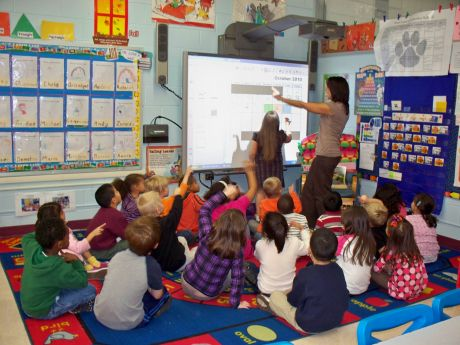Focus Question: Discuss reasons for using technology to engage students in learning.
Students of today live in a world completely governed by technology. What student nowadays would rather search a book in a library when they could simply Google it? Thankfully many teachers understand that the rise of technology signals a change for their teaching styles, and they've begun to adapt to more technology based teachings. More and more teachers are using their smartphones for educational purposes, and the use of pod casts, online videos, and other forms of digital content is also on the rise among educators. Technology is a powerful way to motivate and engage students, and student engagement is a growing and perplexing problem in U.S. education today. Two thirds of High school students report feeling bored in class daily and more than half say they never discuss academic material outside of class.
Technology is a tool that can change those and other statistics of students negativity and boredom. Lessons that incorporate technology are among the methods that students find most engaging. Any teacher who wants students to succeed, can use computers and other technologies to create different designs for learning. Technology fosters critical and creative thinking and problem based learning though use of online research, design programs, and other online learning games.
Part of the challenge and excitement of being a teacher today lies in developing ways to make new technologies an integral part of classroom teaching and student learning. Students of today don't want to sit in class and listen to a teacher simply talk or write on a board, they need to be engaged and interested and technology is their vital tool. Examples of use of technology in the classroom are though vivid visual presentations and power points, online research projects, online learning games, and interviews and other videos that enhance the learning experience.
Connections and Possibilities: TED Talks (Technology, Entertainment, Design)
Students and teachers can now join the worlds top thinkers and researchers where they can share information and scientific ingenuity via the internet. TED talks gives us access to video presentations from annual conferences where hundreds of experts gathered to share ideas for the future. The list of TED speakers includes brain scientist Jill Bolte Taylor, musician Peter Gabriel, ocean explorer David Gallo, and other notables from the fields of technology, business, entertainment, science, design, global studies, culture, and the arts. It is a great resource with more that 1100 videos and various supporters who themselves create memorable and creative lessons with the use of this tool.

Summary:
Many students feel bored in classrooms today; they don't pay attention, they sleep, and they play around on cell phones. Students have even claimed that they dropped out of school because they found it so boring and meaningless. One way teachers have engaged students is through use of technology in the classroom. Technology creates many different learning formats that can engage students with academic material. From my perspective as a student, I am far more interested when technology has an influence. Its easier to understand visual presentations then to just listen to a teacher talk and do a worksheet. Online research projects were always my favorite and I did put a lot of effort in. Technology is also a beneficial tool to teachers, it helps them stay organized and create memorable lesson plans. Technology supports both the instructional and administrative/ professional work of teaching.